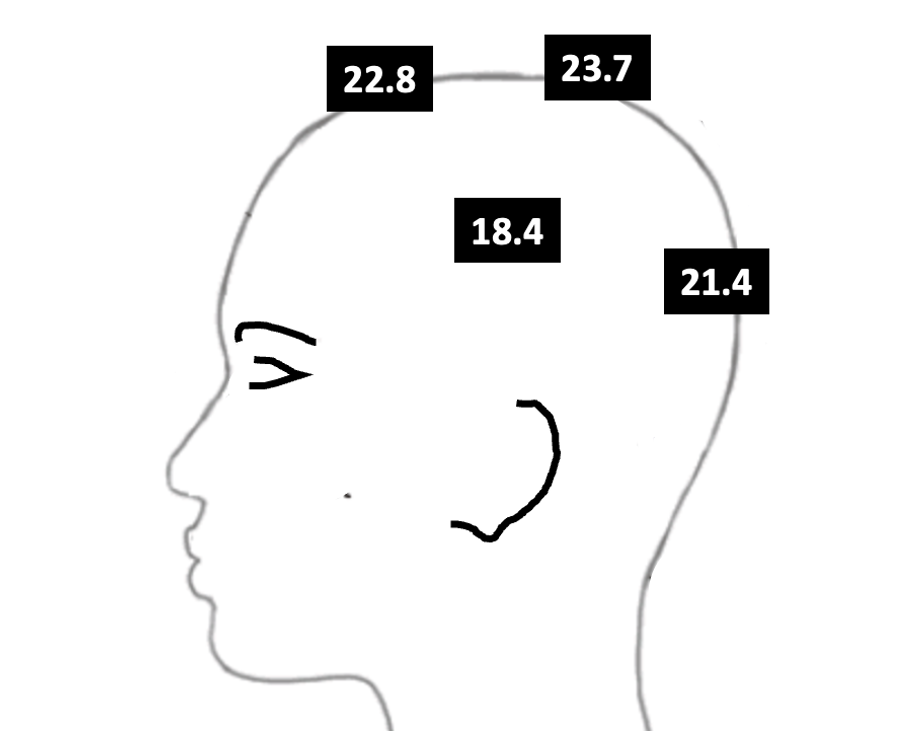Hair Counts in the Scalp: Why you Need to Know About the Temporo-Parietal Scalp
Thai Study Shows Hair Counts 18 % lower in the Temporo-Parietal Scalp
Hair counts are relevant to study as we understand what is nomral in the human scalp and how this changes with disease. Previous studies have reported that Caucasians and Hispanic individuals have higher hair counts than those of Asians and African Descent. In addition, prior studies have suggested there are differences in the density of hair in different regions of the scalp;
Rutnin et al, 2022
A new study set out to evaluate hair count parameters of different scalp areas through histopathological investigation of scalp biopsies.
The studied population here were deceased Thai individuals aged 18 years or older without hair loss. 4 mm punch biopsies were performed on 4 sites of the scalp, including the frontal, vertex, temporoparietal, and occipital areas.
The authors evaluated the number of follicular units and hair follicles, hair type (terminal/indeterminate or vellus), and stage of the hair cycle (anagen or catagen/telogen).
A total of 240 scalp biopsy specimens were studied from 60 patients. There were 36 males and 24 females. The mean age was 39.1 ± 11.9 years, ranging from 21 to 82 years. The vertex had the highest density of hair by hair counts at 23.7 ± 5.3, whereas the frontal and occipital areas had relatively comparable values of 22.8 ± 5.1 and 21.4 ± 5.6, respectively. The temporoparietal area showed the lowest total hair counts among all the scalp sites of 18.4 ± 4.1.
The authors showed that the temporoparietal area also showed the lowest mean numbers of terminal hairs, vellus hairs, and terminal-to-vellus hair (T:V) ratio compared with the other scalp sites. The T:V ratios were only slightly less and did not meet statistical signficance. For example the T:V ratio was 9.3:1 in the frontal scalp, 8.9: 1 in the vertex, 8.3:1 int he temporoparietal scalp and 8.8:1 in the occipital scalp. The average anagen-to-telogen hair (A:T) ratio in each scalp area was comparable and about 8% to 9 % of the scalp had telogen hairs in all the regions studied.
Conclusion:
The authors concluded the average numbers of follicular units and total hair counts were highest in the vertex area and lowest in the temporoparietal area. They showed that the A:T and T:V ratios were comparable between all scalp areas. There were no differences between genders and no correlations with increasing age for any of the parameters.
This is helpful as it reminds us that the T:V ratio is above 8:1 in the normal scalp and the proportions of hairs in telogen is around 8 % to 9 %.
It also reminds us that the temporoparietal area has about 20 % lowest density than other areas of the scalp. Certain hair diseases including telogen effluvium and really going to show up with this area becoming even more thin first. It’s 20 % less dense to begin with and if more hairs are removed from here patients may appreciate even greater chances.
REFERENCE
Rutnin S et al. Variation of Hair Follicle Counts among Different Scalp Areas: A Quantitative Histopathological Study. Skin Appendage Disord. 2022 Jan;8(1):24-30.
This article was written by Dr. Jeff Donovan, a Canadian and US board certified dermatologist specializing exclusively in hair loss.


